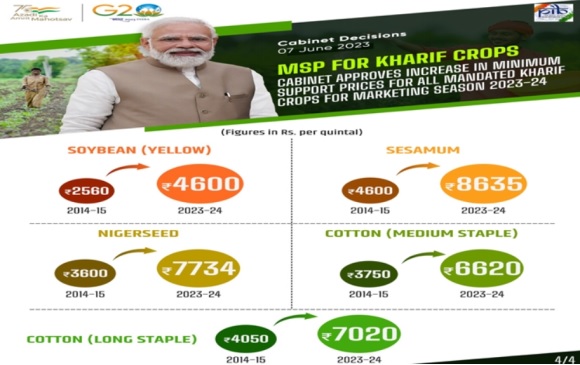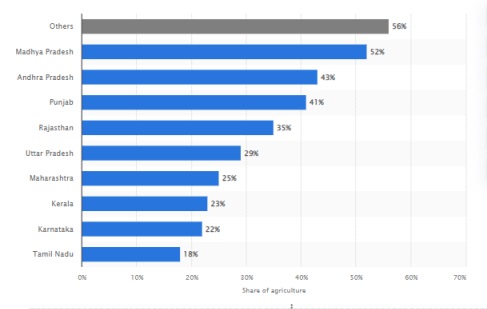Revamp Agricultural Policies for Progress
Relevance
- GS Paper 3: Transport and Marketing of Agricultural Produce and Issues and Related Constraints
- Tags:#AgriculturalPoliciesInIndia #MinimumSupportPrice #FoodInflation #FarmersIncome #IndianAgriculture #MintEditorial #UPSC #CurrentAffairs
Why in the News?
India’s farming rules are complicated and influenced by politics and economics. They aim to boost farmers’ incomes but can cause problems for consumers. We need to review and fix these policies to address recent issues.
Complexity of Agricultural Policies
India’s agricultural policies are known for their complexity, with political and economic factors heavily influencing them.
- Balancing the goal of raising farmers’ incomes with the potential impact on consumers is a challenge.
- The conflicting interests of increasing farmer income and maintaining stable retail prices create dissonance.
Comprehensive Review of Agricultural Policies
First – Reevaluating Minimum Support Price (MSP)
- The current MSP system, primarily focused on rice and wheat, requires a thorough review to address its limitations.
- The inflexible nature of MSPs, where they only rise and never decrease, distorts market prices.
- This leads to a continuous upward bias in prices, even when production reaches new highs.
- To rectify this, there is a pressing need for a revised pricing policy that aligns better with supply and demand dynamics.
- Quality vs. Price Guarantee: The existing MSP system encourages farmers to prioritize fair-quality produce with price guarantees, discouraging the cultivation of better-quality varieties due to price uncertainty.
- A revamped pricing policy can help address price inefficiencies and promote the cultivation of superior crop varieties.
Second – Food Inflation Concerns
Export restrictions are frequently imposed as a result of ongoing worries about food inflation, especially for essential commodities like wheat and rice.
- Disincentive for Crop Improvement: Frequent export bans discourage farmers from cultivating improved crop varieties and transitioning to higher-value agricultural practices.
- General export restrictions hinder the adoption of superior crop varieties, causing the average quality of farmers’ produce to remain at the minimum acceptable level.
- Reviewing Export Bans: It is crucial to reassess the policy of export bans, which, although serving short-term needs, can hinder the commercialization of agriculture and have adverse global repercussions.
- Globalized markets react negatively to export bans, as they reduce overall supply and drive up world prices, contributing to global inflation concerns.
- An example is Indonesia’s palm oil export halt following the Ukraine War, which disrupted global markets.
Third – Rethinking Stock Limits
The policy regarding stock limits, particularly imposed on pulses and sugar during production declines, requires reconsideration.
- Challenge of Year-round Availability: The challenge lies in ensuring that crops, whether categorized as kharif or rabi, are available nationwide throughout the year, bridging the gap until the next crop cycle begins.
- Government’s Role: The Food Corporation of India plays a pivotal role in maintaining year-round availability for rice and wheat, managing buffer stocks for government programs. However, for other crops, farmers and traders undertake this responsibility.
Fourth – Monetizing Harvest
Farmers need to monetize their harvest to generate income, often growing two crops, including Rabi or horticulture crops.
- Selling Post-Harvest:To access funds, farmers must sell their produce right after harvest, often supported by the government’s Minimum Support Price (MSP) system to prevent price crashes due to oversupply.
- Limited access to finance and warehousing facilities prevents farmers from stockpiling their crops.
Fifth – Role of Intermediaries
Intermediaries like traders play a crucial role in the agricultural supply chain. They purchase crops and ensure their availability to meet the country’s demand year-round.
- Logically, someone must hold these crops to ensure a consistent supply as stocks gradually diminish between harvest seasons. Imposing stock limits in this context appears illogical.
- Stock Limits’ Counterproductive Nature:Placing restrictions on traders can hinder their ability to ensure a continuous supply. This contradicts the aim of having crops readily available throughout the year.
- Critical Functions of Intermediaries:Traders and intermediaries perform essential functions such as buying, transportation, distribution, warehousing, risk management, and quality preservation. These activities incur costs that are eventually reflected in the final crop prices.
- Value Addition:Active operators at both the wholesale and retail levels of the market contribute to value addition. Their efforts help in efficiently bridging the gap between farmers and consumers, ensuring a steady flow of agricultural produce.
Sixth – Monsoon Failure and Price Hikes
- News of a monsoon failure or market intelligence suggesting shortages can trigger price increases as a precautionary response.
- Recent policy interventions in India had unintended consequences, worsening price situations and affecting everyone in the value chain.
- In such scenarios, shortages can become self-fulfilling (meaning people will start hoarding for their self consumption)especially with additional hoarding. Households may also start hoarding the commodity, further increasing demand.
Farm policies have improved, focusing on market-oriented approaches to commercialize agriculture. India’s ban on futures trading of commodities like cereals, pulses, and oils needs reevaluation. Restoring futures trading can help farmers manage price volatility. Farmers could also benefit from using options with government-paid premiums. Suspending exports and imposing stock limits are counterproductive and should be avoided.
| Minimum Support Price (MSP)
·Minimum Support Price (MSP) is the price at which the government purchases agricultural produce from farmers to ensure they receive a minimum income for their crops. ·Announcement: MSPs are announced by the Government of India, specifically by the Commission for Agricultural Costs and Prices (CACP). ·Calculation: MSPs are calculated based on various factors like production cost, market price trends, demand, and supply conditions, ensuring a reasonable profit margin for farmers. ·Crop Coverage: MSPs are determined for various crops including cereals, pulses, oilseeds, and more, with revisions made annually. Future Trading ·Future trading is a financial contract where two parties agree to buy or sell an underlying asset like commodities or financial instruments at a predetermined price and date in the future. ·Purpose: Provides price discovery, risk management, and speculation opportunities for participants. ·Example: A farmer can use futures to lock in a price for their crops before the harvest. Options Trading ·Options trading grants the holder the right but not the obligation to buy (call option) or sell (put option) an underlying asset at a specified price within a predetermined timeframe. ·Purpose: Offers risk hedging, income generation, and speculation strategies for participants. ·Example: Buying a call option on a stock allows you to buy it at a fixed price if you choose to, regardless of its market price. |
Source: Livemint
Mains Question
Assess the impact of government interventions in the agricultural sector on prices, market dynamics, and the behavior of participants in the value chain. How can policies be reformed to promote commercialization and address price volatility concerns?





